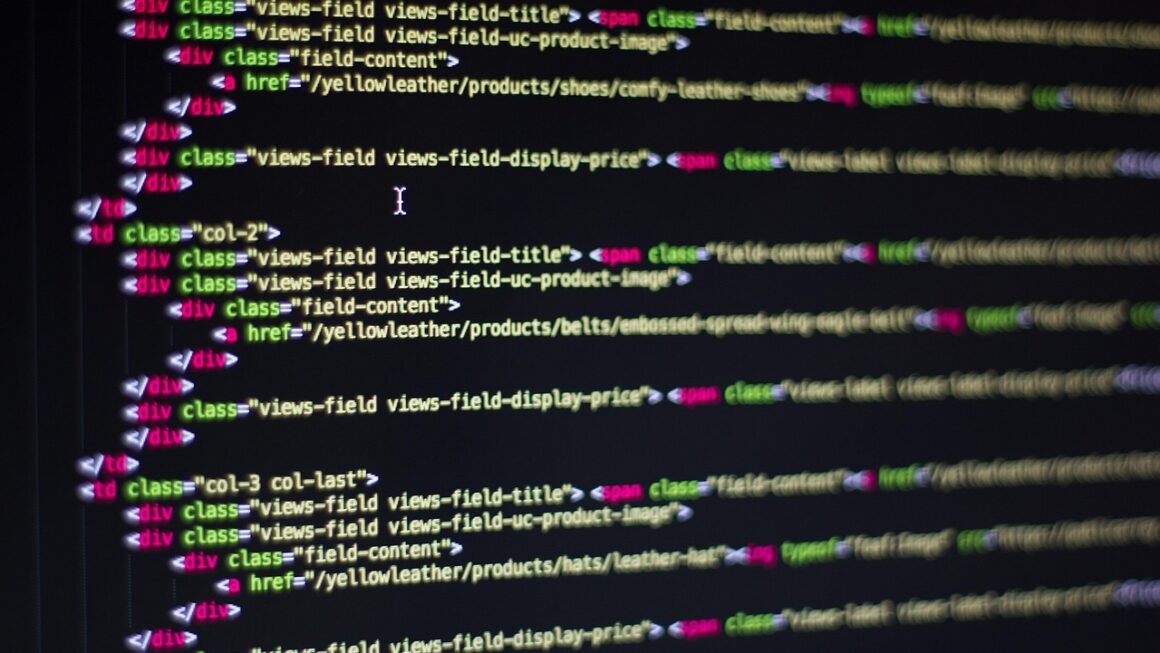Imagine a world where coding isn’t just about meticulously writing lines of instructions, but about collaborating with an intelligent partner who understands your intent and helps you build complex systems with unparalleled efficiency. This future is rapidly approaching, driven by the evolution of AI-based programming languages that are poised to revolutionize software development. This article explores the exciting landscape of AI-driven coding, from the core concepts to the practical applications that are already reshaping how we build software.
Understanding AI-Based Programming Languages
What are AI-Based Programming Languages?
AI-based programming languages represent a paradigm shift in software development. They are not just languages for AI, but languages that use AI to assist in the coding process. They leverage machine learning, natural language processing (NLP), and other AI techniques to automate tasks, suggest improvements, identify errors, and even generate code. This results in faster development cycles, reduced errors, and increased developer productivity.
Key characteristics include:
- Code Generation: The ability to automatically generate code snippets or entire functions based on natural language descriptions or examples.
- Automated Debugging: Using AI to analyze code and identify potential bugs, vulnerabilities, and performance bottlenecks.
- Code Completion and Suggestion: Intelligent suggestions for code completion, function calls, and variable names, based on context and coding patterns.
- Code Optimization: AI-powered tools that analyze code and suggest optimizations to improve performance and reduce resource consumption.
- Natural Language Interface: Allows developers to interact with the programming environment using natural language, making coding more accessible and intuitive.
How AI Enhances the Coding Process
AI brings several advantages to the coding process:
- Increased Productivity: Automates repetitive tasks, freeing up developers to focus on higher-level design and problem-solving.
- Reduced Errors: AI can catch errors that humans might miss, leading to more robust and reliable software.
- Faster Development Cycles: Accelerates the development process by automating code generation and debugging.
- Improved Code Quality: AI can suggest optimizations and enforce coding standards, leading to higher-quality code.
- Lower Barrier to Entry: Natural language interfaces and automated code generation can make coding more accessible to beginners.
Examples of AI-Powered Coding Tools
Several tools are already leveraging AI to enhance the coding experience.
GitHub Copilot
GitHub Copilot is perhaps the most well-known example. It’s an AI pair programmer that suggests code and entire functions in real-time, based on the context of your code and comments. It works with various programming languages, including Python, JavaScript, TypeScript, Ruby, Go, C#, and C++.
- How it works: Copilot is powered by OpenAI Codex, a machine learning model trained on billions of lines of public code.
- Benefits:
Accelerates coding by providing relevant code suggestions.
Helps discover new coding patterns and best practices.
Reduces the need for extensive documentation lookup.
- Example: If you start writing a comment like `# Function to calculate the area of a circle`, Copilot might automatically generate the code for the function.
Tabnine
Tabnine is another popular AI-powered code completion tool. It learns from your coding style and provides personalized code suggestions.
- Key features:
Code completion for various languages and IDEs.
Personalized suggestions based on your coding style.
Support for team-wide learning, improving suggestions for the entire team.
- How it compares to Copilot: Tabnine offers both free and paid plans, with the paid plans providing more advanced features like team-wide learning and longer code completions. Copilot is primarily a subscription-based service.
Other Notable Tools
- DeepCode: An AI-powered platform that analyzes code for security vulnerabilities and performance issues.
- IntelliCode (Visual Studio): Provides AI-assisted code completions and recommendations within Visual Studio.
- Sourcegraph: A code search and intelligence platform that uses AI to understand code structure and dependencies.
The Impact on Software Development Roles
The rise of AI-based programming languages will undoubtedly impact software development roles.
Shifting Responsibilities
- Focus on Higher-Level Design: Developers will spend less time writing boilerplate code and more time on architecture, system design, and problem-solving.
- Emphasis on Collaboration: Developers will collaborate with AI tools, leveraging their capabilities to build complex systems more efficiently.
- Increased Need for AI Literacy: Developers will need to understand the capabilities and limitations of AI-powered coding tools to effectively use them.
The Future of Programming Jobs
While some fear that AI will replace programmers, the reality is likely to be more nuanced.
- Increased Demand for Skilled Developers: The demand for developers with expertise in AI and machine learning will likely increase.
- New Roles and Specializations: We may see the emergence of new roles focused on training and managing AI coding tools.
- Continued Need for Human Creativity and Problem-Solving: AI can automate many tasks, but it cannot replace human creativity, critical thinking, and problem-solving skills.
Actionable Takeaways:
- Embrace AI-powered tools: Start experimenting with tools like GitHub Copilot and Tabnine to see how they can improve your productivity.
- Develop your AI skills: Take courses or tutorials on AI and machine learning to understand the technology behind these tools.
- Focus on higher-level design and problem-solving: Sharpen your skills in these areas to stay ahead of the curve.
Challenges and Limitations
While AI-based programming languages offer tremendous potential, they also face certain challenges and limitations.
Accuracy and Reliability
- Bias in Training Data: AI models are trained on large datasets, and if these datasets contain biases, the models may perpetuate those biases in their code suggestions.
- Limited Understanding of Context: AI models may not always fully understand the context of the code, leading to incorrect or irrelevant suggestions.
- Security Vulnerabilities: AI-generated code may contain security vulnerabilities if the training data includes vulnerable code patterns.
Ethical Considerations
- Intellectual Property: The use of AI to generate code raises questions about intellectual property ownership. Who owns the copyright to code generated by AI?
- Job Displacement: As AI automates more coding tasks, there are concerns about job displacement for developers.
- Transparency and Explainability: It can be difficult to understand how AI models arrive at their code suggestions, making it challenging to debug and trust the code.
Practical Limitations
- Cost: Some AI-powered coding tools can be expensive, especially for individual developers or small teams.
- Learning Curve: While AI can make coding easier, there is still a learning curve associated with using these tools effectively.
- Integration Challenges: Integrating AI tools into existing development workflows can be challenging.
The Future of AI in Programming
The future of AI in programming is bright, with ongoing research and development pushing the boundaries of what’s possible.
Advancements in AI Models
- More Powerful Models: Future AI models will be even more powerful and capable of generating more complex and sophisticated code.
- Improved Context Understanding: AI models will be better at understanding the context of the code, leading to more accurate and relevant suggestions.
- Explainable AI (XAI): Researchers are working on developing AI models that are more transparent and explainable, making it easier to understand how they arrive at their decisions.
Integration with Other Technologies
- Cloud Computing: AI-powered coding tools will be increasingly integrated with cloud computing platforms, providing access to powerful computing resources and large datasets.
- Low-Code/No-Code Platforms: AI will play a key role in low-code/no-code platforms, making it easier for non-programmers to build applications.
- Robotics and Automation: AI-generated code will be used to control robots and automate physical processes.
Actionable Takeaways:
- Stay informed about the latest advancements in AI: Keep up-to-date on the latest research and development in AI and machine learning.
- Experiment with new AI-powered tools: Try out new tools and technologies as they become available.
- Contribute to the ethical development of AI: Support initiatives that promote the responsible and ethical use of AI in programming.
Conclusion
AI-based programming languages are transforming the software development landscape. By automating tasks, suggesting improvements, and identifying errors, these tools are increasing developer productivity, improving code quality, and lowering the barrier to entry for aspiring programmers. While challenges and limitations remain, the future of AI in programming is bright, with ongoing advancements promising even more powerful and sophisticated tools in the years to come. Embracing these technologies and adapting to the changing roles will be crucial for developers to thrive in the age of AI-assisted coding.




